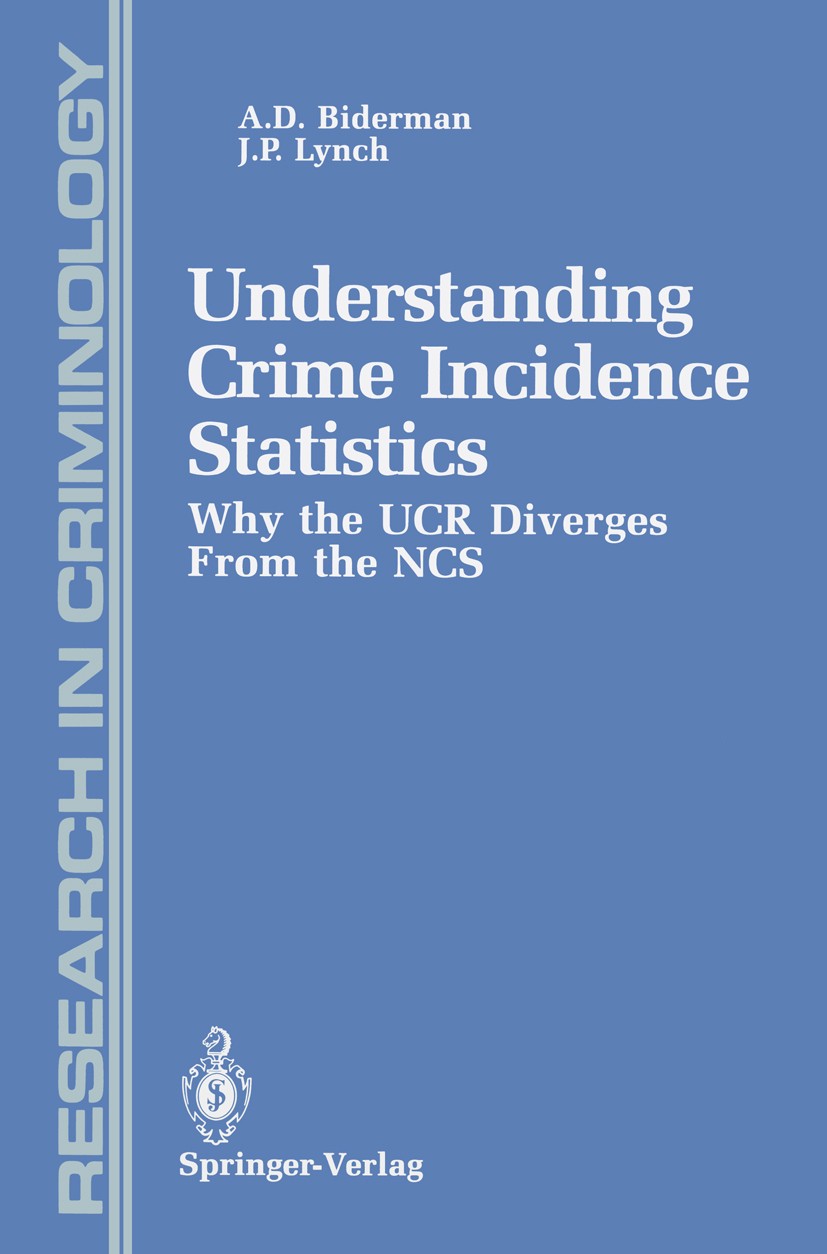| 书目名称 | Understanding Crime Incidence Statistics | | 副标题 | Why the UCR Diverges | | 编辑 | Albert D. Biderman,James P. Lynch | | 视频video | http://file.papertrans.cn/942/941382/941382.mp4 | | 丛书名称 | Research in Criminology | | 图书封面 |  | | 描述 | The prominence achieved by the novel measure of "households touched by crime" when it was introduced into the National Crime Survey (NCS) in 1981 was responsible for renewed attention to comparisons between the crime rates reported by the NCS and the Uniform Crime Reports (UCR). The new NCS measure suggested that crime was declining; this at a time of widespread awareness that the UCR Index was at all-time highs. Com parisons of the NCS and UCR in The New York Times (1981) and the Washington Post (1981) had the unfortunate consequence of reviving old and usually ill-informed arguments about which is the "better" measure of "trends in crime. " More recent discrepant changes of the two measures in 1986 and 1987 rekindled the debate, although with somewhat diminished stridency. The efforts of criminological statisticians to develop an appreciation for the two statistical systems as quite different but complementary measures have suffered a setback in these debates, but an opportunity is also afforded to improve the understanding of crime statistics by officials, the media, and the public. The need remains for the Bureau of Justice Statistics (BJS) , the Federal Bureau of Investigatio | | 出版日期 | Book 1991 | | 关键词 | Crime; statistics; survey | | 版次 | 1 | | doi | https://doi.org/10.1007/978-1-4612-2986-5 | | isbn_softcover | 978-1-4612-7747-7 | | isbn_ebook | 978-1-4612-2986-5Series ISSN 1431-7540 | | issn_series | 1431-7540 | | copyright | Springer-Verlag New York, Inc. 1991 |
The information of publication is updating

|
|
 |Archiver|手机版|小黑屋|
派博传思国际
( 京公网安备110108008328)
GMT+8, 2025-12-14 18:21
|Archiver|手机版|小黑屋|
派博传思国际
( 京公网安备110108008328)
GMT+8, 2025-12-14 18:21


